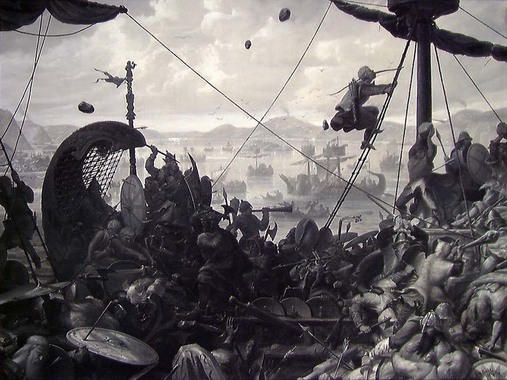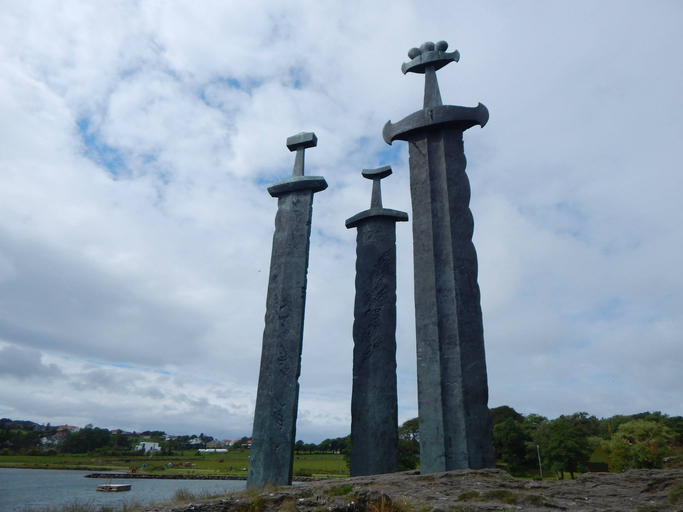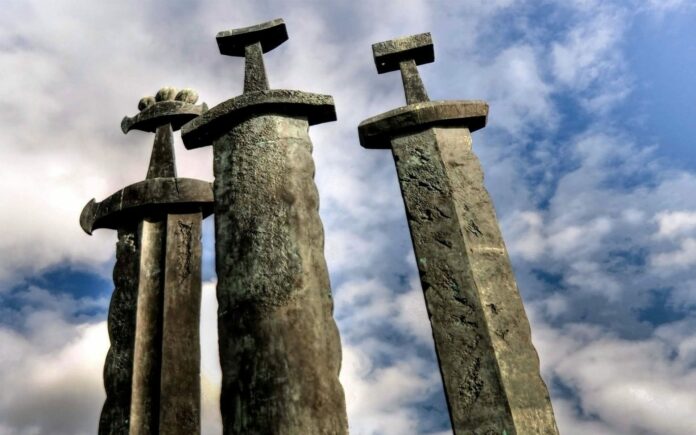Nestled in the picturesque Hafrsfjord neighborhood of Stavanger, Norway, stands a monument of profound historical and cultural significance – the Sverd i fjell, or “Swords in Rock.” This awe-inspiring sculptural work, created by the renowned artist Fritz Røed, serves as a testament to a pivotal moment in Norwegian history – the unification of the nation under the rule of King Harald Fairhair.
The Battle of Hafrsfjord

In the year 872 AD, a decisive battle took place in the waters of Hafrsfjord, which would ultimately shape the course of Norway’s history. This epic clash, known as the Battle of Hafrsfjord, pitted King Harald Fairhair against a coalition of petty kings who sought to maintain their independence. After a hard-fought victory, Harald emerged as the sole ruler of a unified Norway, ushering in a new era of stability and consolidation.
The Sverd i fjell Monument
To commemorate this momentous event, the Sverd i fjell monument was unveiled in 1983 by King Olav V of Norway. The sculpture consists of three bronze swords, each standing an impressive 10 meters (33 feet) tall, planted firmly into the rocky outcrop overlooking the fjord. The largest sword, representing the victorious Harald Fairhair, stands in the center, flanked by the two smaller swords symbolizing the defeated petty kings.
The Artistic Vision

The creator of this breathtaking monument, sculptor Fritz Røed, masterfully captured the essence of the Battle of Hafrsfjord through his work. The swords, with their sharp, gleaming blades and imposing stature, convey a sense of power and determination, while the placement of the sculpture amidst the natural beauty of the fjord and surrounding landscape lends an air of grandeur and significance to the memorial.
The Enduring Legacy

The Sverd i fjell monument stands as a testament to Norway’s rich history and the enduring spirit of its people. Visitors from around the world flock to this site, drawn by the captivating story it represents and the sheer majesty of the sculpture itself. As they gaze upon the towering bronze swords, they are transported back in time, experiencing a tangible connection to the pivotal events that shaped the nation.
Conclusion
The Sverd i fjell monument in Hafrsfjord is more than just a striking work of art; it is a living embodiment of Norway’s history, a physical manifestation of the struggles and triumphs that have defined the country’s identity. This timeless memorial serves as a constant reminder of the sacrifices made and the unity forged in the pursuit of a shared vision – a vision that continues to inspire and captivate all who bear witness to its grandeur.
